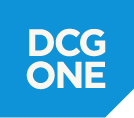Corporate Communications Group Covid-19 Statement: We’re Open To Serve You.
/in Direct MailWe recognize that COVID-19 has affected many companies’ ability to do business and stay ahead of this fluid situation. In this time of uncertainty, our thoughts are with you.
Our concern for the well-being of our employees, clients, suppliers and others within our community is first and foremost. We are taking all actions recommended by the CDC, WHO and state, local and federal governments to protect their health.
Now, more than ever, we stand ready and able to deliver your message. While some of our staff is working remotely, our manufacturing team is on-site to ensure uninterrupted production and distribution of your materials. CCG is open for business.
- We are monitoring our employee’s health – stressing the importance of staying home if an employee suspects they have been exposed to COVID-19 or is displaying symptoms.
- We are leveraging video and conference technology to promote social distancing and provide non-contact meetings so we can continue to collaborate with you on projects and ideas in real-time.
- Our daily procedures include enhanced cleaning and disinfecting of our offices, production areas and equipment.
- We have eliminated business travel and suspended visitors to our facility.
- We are in constant communication with our supply chain to ensure availability of the materials we need on hand to produce your work.
- Finally, we are working with all of our employees to provide flexibility and support due to daycare and school closings.
We understand that your organization is facing the same challenges and the uncertainty that accompanies this unprecedented situation. Our hearts go out to the many who are affected in so many ways.
Corporate Communications Group has taken the above actions in order to do our part in limiting the potential spread of the virus, care for our employees and to maintain our ability to produce and deliver the messages and materials you need today and tomorrow. We will provide additional updates as more information becomes available.
Thank you for your continued support – and please stay safe and healthy!
Michael Marcian
CEO, Corporate Communications Group
2020 USPS Direct Mail Promotions
/in Direct Mail, USPS & MailingDownload your PDF here and give us a call to learn how to qualify your next direct mail project!
